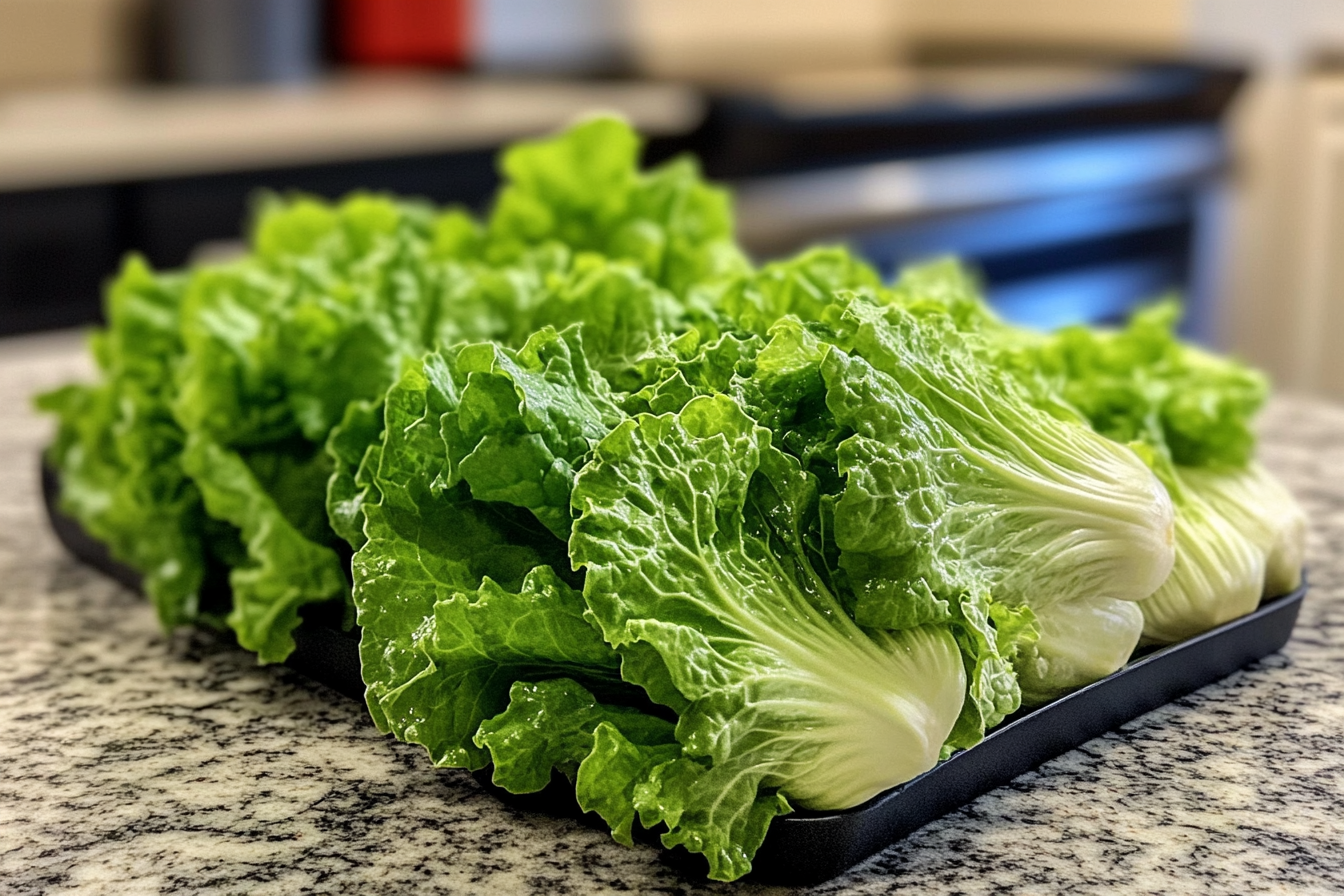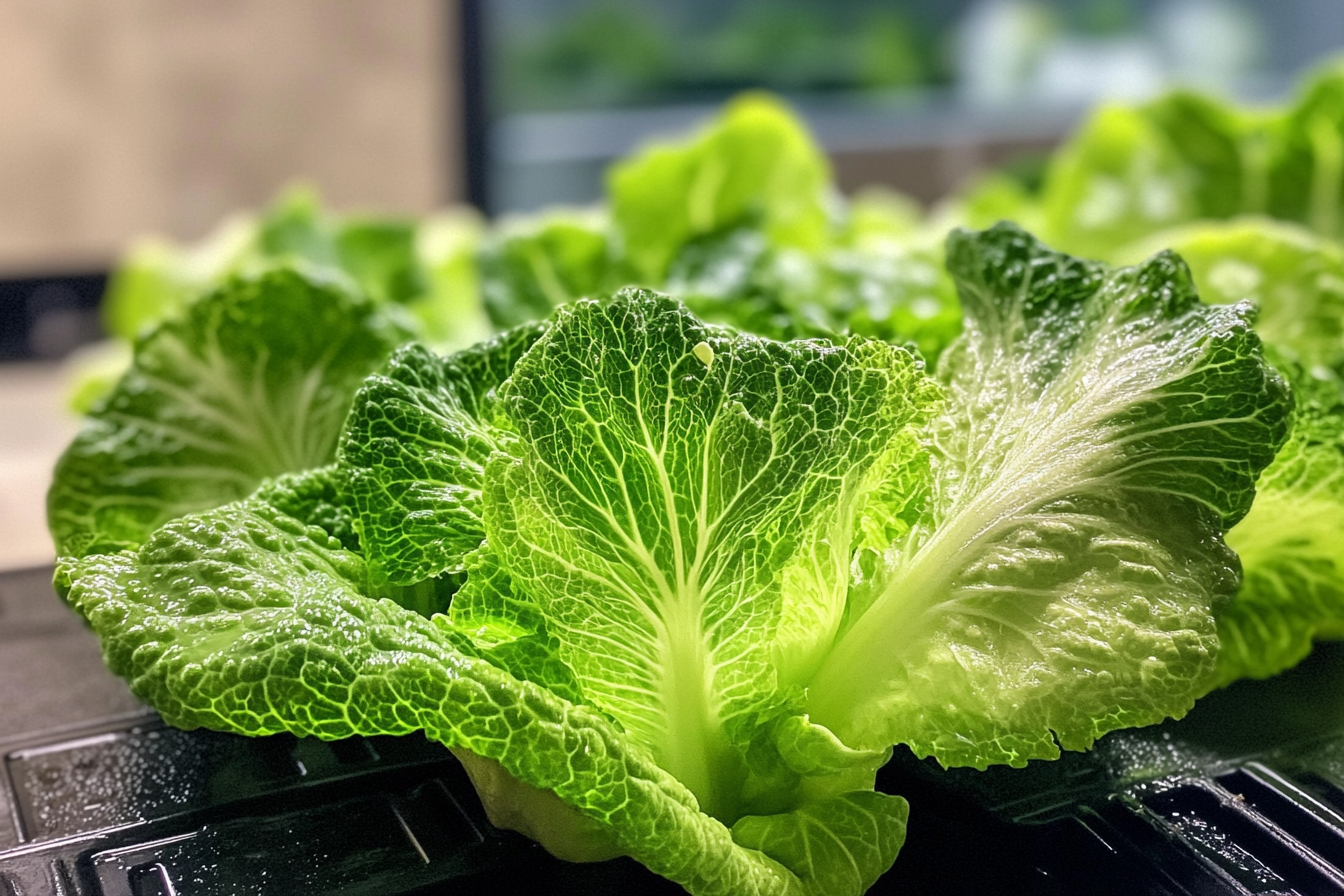Escarole is a leafy green vegetable from the chicory family, which includes endive, frisée, and radicchio. This family of greens is known for its slightly bitter flavor, which adds depth and complexity to a variety of dishes. Unlike lettuce, which has a mild flavor, this vegetable has a unique blend of bitterness and sweetness, making it a fantastic ingredient for both raw and cooked meals. Whether you’re using it in salads or hearty soups, escarole brings a unique flavor and texture to the table.
In this comprehensive guide, we’ll explore everything there is to know about this vegetable its taste, nutritional benefits, preparation, and best ways to cook with it. By the end, you’ll be ready to incorporate this vegetable into your kitchen routine.
What Does Escarole Taste Like?
Escarole is characterized by its slightly bitter taste, with a flavor that varies depending on the part of the leaf you use. The darker, outer leaves are more robust and bitter, while the inner leaves are lighter and tender with a milder flavor. This range of taste makes escarole a versatile ingredient suitable for many dishes.
When eaten raw, this vegetable offers a crisp texture and a mild bitterness that pairs beautifully with bolder ingredients like citrus, cheese, or vinaigrettes. In cooked dishes, such as soups or sautés, the bitterness mellows, and the leaves become tender, adding a delicious complexity to the dish.
While lettuce or spinach might have a neutral flavor, this vegetable holds its own in savory dishes, making it a great addition to recipes where you want to balance richer or sweeter flavors.
Escarole is a versatile green with a slight bitterness. Learn more about escarole and its uses for salads, soups, and side dishes.
Ideal Flavor Pairings for Escarole
When cooking with escarole, consider pairing it with ingredients that complement or balance its slightly bitter taste. Some of the best combinations include:
- Citrus fruits: The bright acidity of lemon, orange, or grapefruit balances the bitterness of escarole.
- Sharp cheeses: Parmesan, feta, or blue cheese enhance the natural flavors of escarole in both raw and cooked dishes.
- Nuts: Toasted almonds, walnuts, or pine nuts add richness and a crunchy texture that works well in escarole salads.
- Sweet fruits: Sliced apples, pears, or even dried cranberries pair wonderfully with escarole’s bitterness in salads, creating a delightful balance of sweet and savory flavors.
Tips for Cooking with Escarole
Here are some quick tips to make the most of escarole in your recipes:
- Blanch the leaves: This technique can help reduce some of the bitterness, especially if you’re adding escarole to soups or sautés.
- Balance with strong flavors: Ingredients like garlic, anchovies, or red pepper flakes work well with escarole’s bitter notes.
- Serve raw in salads: Use escarole raw in salads, but make sure to balance the bitterness with sweet or tangy ingredients like citrus or honey.
- Cook gently: Avoid overcooking escarole, as it can become mushy. Lightly sauté or braise it to maintain its texture and flavor.
Nutritional Benefits of Escarole
Escarole is more than just a flavorful green it’s also packed with nutrients that provide significant health benefits. Incorporating this vegetable into your diet can enhance your overall health, thanks to its rich vitamin and mineral content.
Vitamins and Minerals
Here are some of the key vitamins and minerals found in escarole:
- Vitamin A: Supports eye health and boosts the immune system.
- Vitamin C: Important for collagen production, skin health, and immune support.
- Vitamin K: Crucial for blood clotting and bone health.
- Folate: Supports healthy cell function, making it especially important for pregnant women.
- Potassium: Helps regulate blood pressure and supports cardiovascular health.
Antioxidants
Escarole contains several powerful antioxidants, including beta-carotene and flavonoids, which protect the body against oxidative stress. These antioxidants help reduce inflammation and lower the risk of chronic diseases, such as heart disease and cancer.
Low in Calories, High in Fiber
Escarole is low in calories but high in fiber, making it an excellent choice for weight management. The fiber in this vegetable also supports digestive health by promoting regular bowel movements and helping to prevent constipation.
Heart Health and Blood Pressure
The combination of potassium, fiber, and antioxidants found in this vegetable supports heart health. Potassium helps regulate blood pressure, while fiber helps lower cholesterol levels. Antioxidants reduce inflammation in blood vessels, protecting the cardiovascular system.
Blood Sugar Regulation
Because this vegetable is high in fiber, it helps regulate blood sugar levels by slowing down the absorption of sugar into the bloodstream. This makes it an excellent choice for people with diabetes or anyone looking to maintain stable blood sugar levels.
Where to Find Escarole and How to Select It
Escarole can often be found in the produce section of large grocery stores, but you may also find it at farmers’ markets or specialty food shops. When selecting this vegetable, look for heads with fresh, crisp leaves that are free of wilting or discoloration.
How to Choose the Best Escarole
When picking escarole, follow these simple guidelines to ensure you’re selecting the freshest bunch:
- Look for vibrant, green leaves: The outer leaves should be dark green and firm to the touch.
- Inspect the inner leaves: The inner leaves should be pale green or yellow and feel tender.
- Avoid wilting or browning: Any brown spots or slimy patches indicate that the escarole is past its prime.
How to Store Escarole
Proper storage is essential for keeping your escarole fresh. Here’s how to store it:
- Refrigerate immediately: Store escarole in the crisper drawer of your fridge, where it can stay fresh for up to five days.
- Wrap in a damp paper towel: This helps retain moisture and prevents the leaves from drying out.
- Place in a plastic bag: Store your escarole in a plastic bag or reusable produce bag to keep it fresh and crisp.
How to Prepare Escarole
Before using this vegetable, it’s essential to clean it thoroughly to remove any dirt or grit. Here’s a step-by-step guide on how to clean and prepare this vegetable for your recipes:
Cleaning Escarole
- Rinse the leaves: Separate the leaves and rinse them under cold running water to remove any dirt or sand.
- Soak if necessary: If the leaves are particularly dirty, soak them in cold water for a few minutes before rinsing.
- Dry thoroughly: Use a salad spinner or pat the leaves dry with a clean towel to remove excess water.
Trimming and Preparing Escarole
- Trim the base: Cut off the bottom inch of the escarole head, where the leaves are toughest.
- Separate the leaves: For raw dishes, tear or chop the leaves into bite-sized pieces.
- Cook gently: If cooking, add the leaves to your dish just before serving to maintain texture.
How to Use This Vegetable in Cooking
Escarole is an incredibly versatile green that can be used in a wide range of dishes, from fresh salads to cooked soups and sautés. Let’s explore some of the best ways to incorporate this vegetable into your cooking.
1. Raw in Salads
One of the easiest ways to enjoy this vegetable is raw in salads. Its slight bitterness pairs well with sweet, tangy, or rich ingredients. Here are some salad ideas:
- Escarole and Citrus Salad: Toss this vegetable with segments of orange or grapefruit and drizzle with a citrus vinaigrette for a refreshing, tangy salad. Add toasted almonds for crunch.
- Apple and Escarole Salad: Pair this vegetable with sliced apples, feta cheese, and a drizzle of honey for a sweet-savory combination.
- Escarole Caesar Salad: Use this vegetable as a base for a Caesar salad, topped with parmesan, croutons, and Caesar dressing.
Check out more about how to use this vegetable in salads at this guide to using greens.
2. In Soups
Escarole is a staple in many soups, especially Italian ones. Its leaves hold up well during simmering, and the bitterness mellows during cooking, adding a rich flavor to the broth. Here are some ideas:
- Italian Wedding Soup: Combine escarole with meatballs, pasta, and broth for a classic Italian wedding soup.
- White Bean and Escarole Soup: Pair escarole with cannellini beans, garlic, and vegetable broth for a hearty, vegetarian soup.
- Chicken and Escarole Soup: Simmer this vegetable with chicken, carrots, and celery for a simple, comforting meal.
For more details on how to use this vegetable in soups, visit this article about similar greens.
3. Sautéed or Braised
Sautéing or braising escarole brings out its tenderness and softens the bitterness, making it a great side dish. Try these methods:
- Sautéed Escarole with Garlic: Sauté garlic in olive oil, then add escarole and cook until wilted. Finish with a sprinkle of red pepper flakes and a squeeze of lemon.
- Braised Escarole with White Beans: Braise this vegetable with white beans and onion in vegetable broth for a rich, savory side dish.
- Escarole and Sausage: Combine sautéed escarole with Italian sausage for a hearty, one-pan meal.
Substitutes
If you can’t find escarole, you can substitute other leafy greens in most recipes. Here are some great alternatives:
- Broccoli rabe: This green is similarly bitter and works well in cooked dishes like sautés and soups.
- Swiss chard or kale: These greens are milder but still hold up well in cooked dishes.
- Mustard greens or dandelion greens: These greens are more pungent and bitter than escarole, but can be used similarly in dishes like soups and sautés.
FAQs
What can I use instead of escarole?
You can use broccoli rabe, Swiss chard, kale, or dandelion greens as substitutes in most recipes.
Is escarole a type of lettuce?
No, escarole is part of the chicory family, which includes other bitter greens like endive and radicchio. It may look similar to lettuce, but its flavor is more complex and slightly bitter.
What’s the difference between escarole and endive?
Both are part of the chicory family, but this vegetable has broader leaves and a milder flavor than endive, which is more bitter and has tightly packed leaves.
Can I eat escarole raw?
Yes! Escarole can be eaten raw, particularly the tender inner leaves. It’s often used in salads or as a garnish for sandwiches.
Is escarole good for soups?
Definitely! Escarole is an excellent green for soups, as it holds its texture well when cooked. The bitterness mellows, adding a depth of flavor to the broth.
Conclusion
Escarole is a versatile and nutritious leafy green that offers endless possibilities in the kitchen. Whether you’re using it raw in salads, cooked in soups, or sautéed as a side dish, this vegetable adds a unique flavor and texture that can elevate any meal. Its health benefits, including its high vitamin content and antioxidants, make it a valuable addition to your diet.
By experimenting with different ways to prepare and cook this vegetable, you’ll discover just how adaptable and delicious this leafy green can be. Next time you’re in the grocery store, pick up a head of escarole and explore its many culinary uses!



